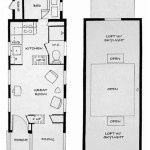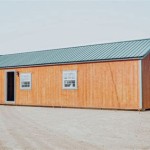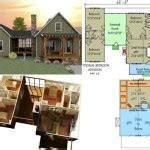Single family house plans are blueprints that provide detailed instructions for the construction of a home designed for a single family. These plans include all the necessary information for building a house, from the foundation to the roof, and can be used by architects, contractors, and homeowners alike to ensure that the home is built according to the desired specifications.
When creating single family house plans, it is important to consider the needs and preferences of the family who will be living in the home. Factors such as the number of bedrooms and bathrooms, the size and layout of the kitchen and living areas, and the presence of outdoor space should all be taken into account. By carefully considering these factors, architects and designers can create single family house plans that meet the specific requirements of each family.
In the following sections, we will discuss the different types of single family house plans available, the factors to consider when choosing a plan, and the process of working with an architect or designer to create a custom plan.
When choosing a single family house plan, there are a number of important factors to consider, including:
- Number of bedrooms
- Number of bathrooms
- Size and layout of kitchen
- Size and layout of living areas
- Presence of outdoor space
- Architectural style
- Energy efficiency
- Budget
By carefully considering these factors, you can choose a single family house plan that meets your specific needs and preferences.
Number of bedrooms
The number of bedrooms in a single family house plan is one of the most important factors to consider. The number of bedrooms you need will depend on the size of your family, your lifestyle, and your future plans.
- One bedroom: A one-bedroom house plan is ideal for a single person or a couple without children. It can also be a good option for a vacation home or a retirement home.
- Two bedrooms: A two-bedroom house plan is a good option for a small family or a couple who plans to have children in the future. It can also be a good option for a roommate situation.
- Three bedrooms: A three-bedroom house plan is the most common type of single family house plan. It is a good option for a family with one or two children. It can also be a good option for a couple who wants to have a home office or a guest room.
- Four or more bedrooms: A four-bedroom or larger house plan is a good option for a large family or a family who plans to have more children in the future. It can also be a good option for a family who wants to have a home theater or a game room.
When choosing the number of bedrooms for your single family house plan, it is important to consider your current and future needs. You should also consider the size of your lot and your budget.
Number of bathrooms
The number of bathrooms in a single family house plan is another important factor to consider. The number of bathrooms you need will depend on the size of your family, your lifestyle, and your budget.
- One bathroom: A one-bathroom house plan is ideal for a single person or a couple without children. It can also be a good option for a vacation home or a retirement home.
- Two bathrooms: A two-bathroom house plan is a good option for a small family or a couple who plans to have children in the future. It can also be a good option for a roommate situation.
- Three bathrooms: A three-bathroom house plan is a good option for a family with one or two children. It can also be a good option for a couple who wants to have a home office or a guest room.
- Four or more bathrooms: A four-bathroom or larger house plan is a good option for a large family or a family who plans to have more children in the future. It can also be a good option for a family who wants to have a home theater or a game room.
When choosing the number of bathrooms for your single family house plan, it is important to consider your current and future needs. You should also consider the size of your lot and your budget.
Size and layout of kitchen
The kitchen is one of the most important rooms in a single family house. It is where families gather to cook, eat, and spend time together. As such, it is important to choose a kitchen size and layout that meets the needs of your family.
The size of your kitchen will depend on the number of people in your family, your cooking habits, and your entertaining style. If you have a large family or entertain frequently, you will need a larger kitchen with more counter space and storage. If you cook frequently, you will need a kitchen with a well-equipped layout that allows you to move around easily.
The layout of your kitchen is also important. The most common kitchen layouts are the U-shape, the L-shape, and the galley kitchen. The U-shape kitchen is a good option for families who need a lot of counter space and storage. The L-shape kitchen is a good option for families who want a more open kitchen with a breakfast bar. The galley kitchen is a good option for small kitchens or kitchens that are part of a larger open floor plan.
When choosing the size and layout of your kitchen, it is important to consider your current and future needs. You should also consider the size of your lot and your budget.
By carefully considering all of these factors, you can choose a kitchen size and layout that meets the specific needs of your family.
Size and layout of living areas
The size and layout of the living areas in a single family house plan is important to consider. The living areas are where families spend time together, relax, and entertain guests. As such, it is important to choose a size and layout that meets the needs of your family.
The size of your living areas will depend on the number of people in your family, your lifestyle, and your entertaining style. If you have a large family or entertain frequently, you will need larger living areas with more seating and space to move around. If you have a smaller family or entertain less frequently, you may be able to get by with smaller living areas.
The layout of your living areas is also important. The most common living area layouts are the open floor plan, the closed floor plan, and the split-level floor plan. The open floor plan is a good option for families who want a more spacious and airy living area. The closed floor plan is a good option for families who want more separate and defined living areas. The split-level floor plan is a good option for families who want a combination of open and closed living areas.
When choosing the size and layout of your living areas, it is important to consider your current and future needs. You should also consider the size of your lot and your budget.
By carefully considering all of these factors, you can choose a living area size and layout that meets the specific needs of your family.
Presence of outdoor space
The presence of outdoor space is an important factor to consider when choosing a single family house plan. Outdoor space can provide a place for families to relax, entertain, and enjoy the outdoors. It can also increase the value of your home and make it more attractive to potential buyers.
There are many different types of outdoor space that you can incorporate into your single family house plan. Some popular options include patios, decks, porches, and balconies. Patios are paved areas that are typically located on the ground level. Decks are raised platforms that are typically made of wood or composite materials. Porches are covered areas that are attached to the house. Balconies are platforms that are attached to the upper level of the house and typically have railings around them.
When choosing the type of outdoor space that is right for you, it is important to consider your needs and preferences. If you want a space that is easy to maintain, a patio or deck may be a good option. If you want a space that is more private, a porch or balcony may be a better choice. You should also consider the size of your lot and your budget when making your decision.
In addition to the type of outdoor space, you should also consider the location of the space. If you want a space that is easily accessible from the house, a patio or deck that is located off of the kitchen or living room may be a good option. If you want a space that is more private, a porch or balcony that is located on the upper level of the house may be a better choice.
By carefully considering all of these factors, you can choose a type and location of outdoor space that meets the specific needs of your family.
Architectural style
The architectural style of your single family house plan is an important factor to consider. The architectural style will determine the overall look and feel of your home, and it should be chosen to reflect your personal taste and preferences.
- Traditional style: Traditional style homes are characterized by their symmetrical , columns, and pitched roofs. They are often made of brick, stone, or wood.
- Modern style: Modern style homes are characterized by their clean lines, open floor plans, and large windows. They are often made of concrete, glass, and metal.
- Craftsman style: Craftsman style homes are characterized by their exposed beams, natural materials, and wide porches. They are often made of wood and stone.
- Ranch style: Ranch style homes are characterized by their long, low profiles and open floor plans. They are often made of brick, stone, or wood.
These are just a few of the many different architectural styles that you can choose from for your single family house plan. When choosing a style, it is important to consider your personal taste and preferences, as well as the style of the other homes in your neighborhood.
Energy efficiency
Energy efficiency is an important factor to consider when choosing a single family house plan. An energy-efficient home can save you money on your energy bills and help to reduce your carbon footprint. There are many different ways to make your home more energy-efficient, including:
- Insulating your home: Insulation helps to keep your home warm in the winter and cool in the summer, which can reduce your energy costs for heating and cooling. There are many different types of insulation available, so be sure to choose one that is appropriate for your climate and budget.
- Installing energy-efficient windows and doors: Energy-efficient windows and doors can help to reduce heat loss in the winter and heat gain in the summer. Look for windows and doors that have a high Energy Star rating.
- Using energy-efficient appliances: Energy-efficient appliances use less energy to operate, which can save you money on your energy bills. Look for appliances that have a high Energy Star rating.
- Installing a solar energy system: A solar energy system can generate electricity from the sun, which can help to reduce your reliance on fossil fuels. Solar energy systems can be expensive to install, but they can save you money on your energy bills in the long run.
By incorporating these energy-efficient features into your single family house plan, you can build a home that is comfortable, affordable, and environmentally friendly.
Budget
The budget is one of the most important factors to consider when choosing a single family house plan. The cost of building a home can vary significantly depending on the size of the home, the materials used, and the complexity of the design. It is important to set a budget before you start shopping for house plans so that you can narrow down your choices and avoid overspending.
There are a number of ways to save money on the cost of building a home. One way is to choose a smaller home plan. Another way is to choose less expensive materials, such as vinyl siding instead of brick. You can also save money by simplifying the design of your home, such as by choosing a ranch style home instead of a two-story home.
It is also important to factor in the cost of land when budgeting for your new home. The cost of land can vary significantly depending on the location and size of the lot. It is important to do your research and budget for the cost of land before you start shopping for house plans.
Finally, it is important to remember that the cost of building a home can also vary depending on the local labor market. In areas where labor costs are high, the cost of building a home will be higher. It is important to factor in the cost of labor when budgeting for your new home.
By carefully considering all of these factors, you can set a realistic budget for your new home and choose a house plan that meets your needs and budget.










Related Posts








